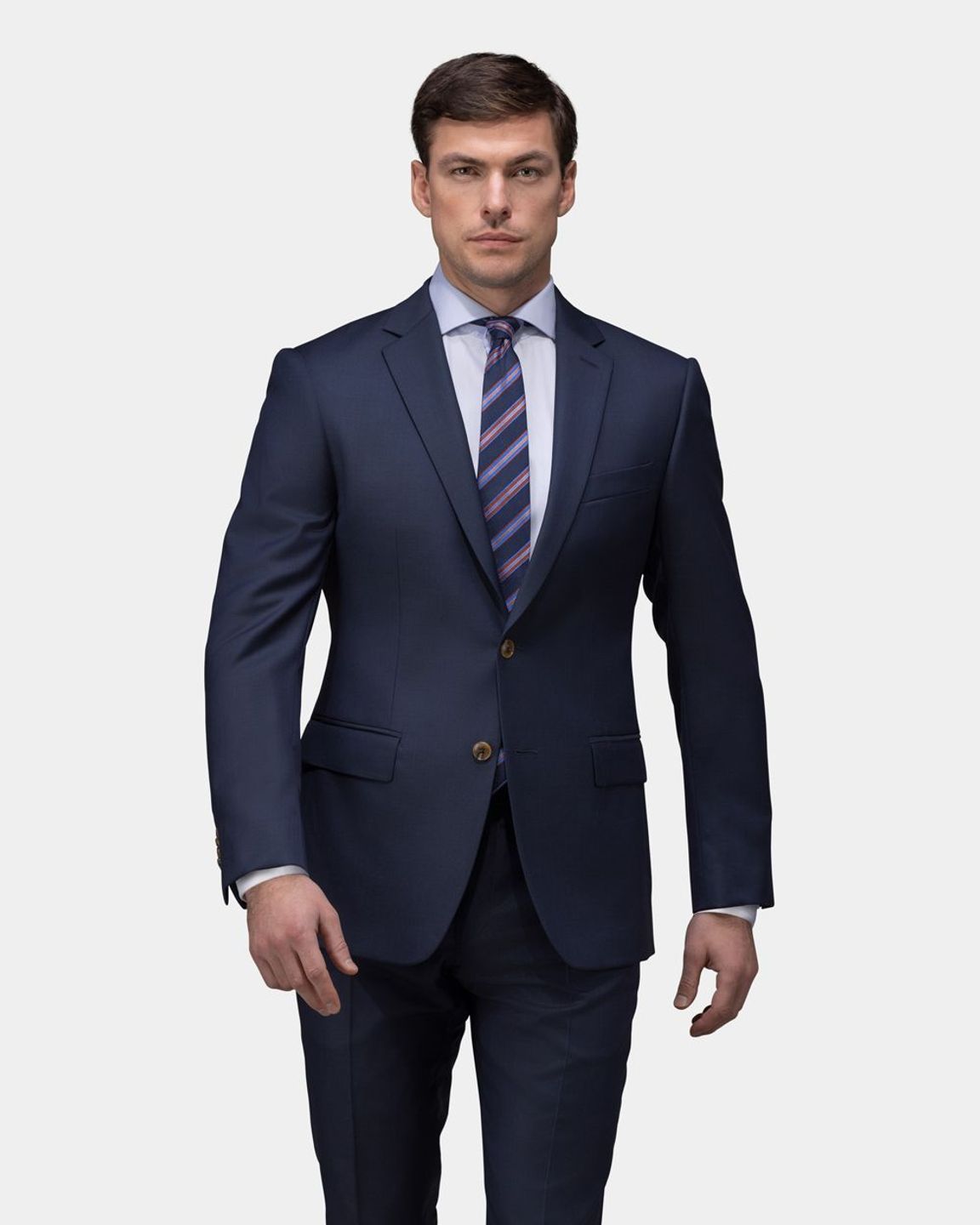Comprehending the Tailoring Process: From Material Option to Last Suitable for the Perfect Wardrobe
The customizing procedure is an intricate interplay of art and science, starting with the critical choice of material choice and culminating in the accurate modifications of final fittings. Each fabric kind brings one-of-a-kind top qualities that influence not just the aesthetic appeal yet likewise the garment's long life and viability for different events.
Significance of Fabric Selection
Choosing the appropriate material is essential in the customizing process, as it straight influences the comfort, resilience, and overall visual of the last garment. The choice of fabric establishes the foundation for the garment's efficiency, functionality, and design. Different fabrics possess unique residential or commercial properties, such as breathability, stretch, and weight, which can dramatically influence how the garment drapes and fits the body.

A tailored piece made from a proper textile not just showcases workmanship yet additionally boosts the user's self-confidence. Understanding the nuances of fabric selection is paramount for any kind of customizing endeavor. It makes certain that the end product not just meets the visual wishes of the client yet additionally aligns with useful demands, thereby accomplishing an unified balance in between type and feature in the tailored closet.
Sorts Of Fabrics and Their Uses
Understanding the various kinds of materials offered is vital for making informed choices during the tailoring procedure. Each material possesses unique features that determine its suitability for specific garments and celebrations.
Cotton, understood for its breathability and gentleness, is perfect for casual wear and summer season clothes. Its versatility allows it to be customized into every little thing from tee shirts to dresses. Woollen, on the other hand, is preferred for its warmth and structure, making it an exceptional choice for official fits and outerwear. Its all-natural elasticity aids garments preserve shape gradually.
Silk radiates high-end and is light-weight, making it excellent for eveningwear and fragile blouses; nonetheless, it needs mindful handling because of its delicacy. Linen, with its distinctive finish, is a prominent selection for warm environments, providing a crisp and airy feeling, but it wrinkles quickly, which might affect the garment's appearance.
Artificial fabrics, such as polyester and nylon, offer longevity and resistance to wrinkles, making them appropriate for day-to-day wear and active garments. Comprehending these material kinds and their properties enables better decision-making, guaranteeing that each tailored piece not just fits well yet additionally straightens with the designated function and event.
The Tailoring Methods Clarified
The art of customizing counts on a range of methods that change textile right into well-fitted garments. Central to this process is pattern drafting, where a tailor produces themes based upon the customer's dimensions and preferred style. This first action makes sure that the garment will fit the user appropriately before any cutting occurs.
Once patterns are developed, cutting techniques enter play. Accuracy is redirected here critical as inaccuracies can result in misfitting garments. Tailors typically use different cutting techniques, such as single-layer cutting for elaborate designs and multiple-layer reducing for efficiency on standard patterns.
Basting is one more important strategy, allowing tailors to temporarily sew textile assemble for a preliminary installation (tailor suits perth). This approach provides the possibility to evaluate the drape and overall silhouette prior to final stitching
Seaming strategies, including flat-felled joints and French seams, improve the garment's longevity and visual appeal. Tailors also use methods such as interfacing and padding to provide framework and shape to specific locations, like collars and shoulders.
Finally, finishing strategies, including hemming and side completing, ensure the garment's longevity while supplying a sleek look. Together, these strategies create click here for more info the foundation of reliable tailoring, leading to charming, custom-fit apparel.

Suitable Changes and Considerations
After the initial customizing methods have been used and the garment is constructed, fitting adjustments come to be vital to accomplishing the perfect fit. These modifications attend to numerous facets of the garment, ensuring it contours to the user's physique and improves total appearance.

The rise of trousers is an additional vital variable; it ought to sit comfortably over the hips without creating pain, enabling for ease of movement. Hemming sizes for both trousers and skirts ought to show the wearer's preferred style while respecting proportions.
Moreover, focus must be provided to the back of the garment, ensuring that there are no undesirable pulls or excess textile - top tailor perth. Each adjustment needs to be thoroughly thought about, as even small alterations can significantly influence the general fit and aesthetic of the customized piece, inevitably causing a wardrobe that exudes self-confidence and class
Maintaining Your Tailored Apparel
Appropriate maintenance of customized garments is vital to preserving their fit and look over time. To make sure longevity, normal cleaning is extremely important. Always adhere to the care tag instructions, which might recommend completely dry cleaning for delicate textiles or device cleaning for more long lasting materials. Prevent constant laundering, as this can use down the textile and alter the garment's form.
Storage is similarly vital; use padded wall mounts for coats and layers to preserve shoulder framework, and shop pants folded up neatly or hung to stop creasing. Shield garments from straight sunlight, which can discolor shades and damages fibers.
In addition, periodic examinations for minor repairs can avoid larger problems. Look for loose switches, fraying seams, or indicators of moth damage, attending to these problems without delay image source to maintain the garment's integrity.
Lastly, consider seasonal rotation. Putting on customized pieces in moderation allows textiles to recoup, prolonging their life expectancy. By executing these maintenance strategies, you can ensure that your customized garments stay as pristine as the day you first used them, enhancing your optimal closet for years to come.
Final Thought
The customizing process, including textile choice, skilled methods, and specific fitting modifications, plays a crucial function in producing garments that enhance both convenience and design. Comprehending the relevance of maintenance prolongs the life of customized garments, strengthening their value in a well-curated wardrobe.